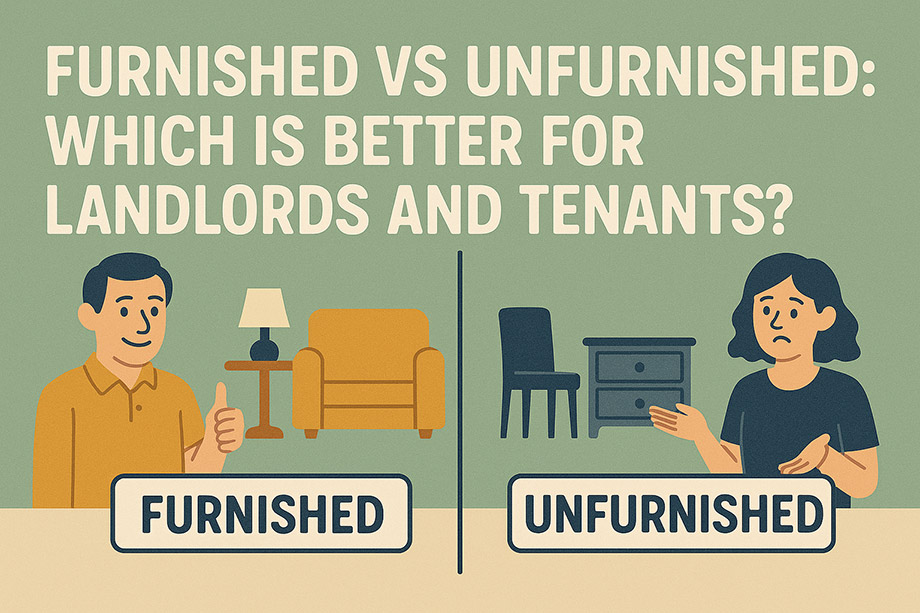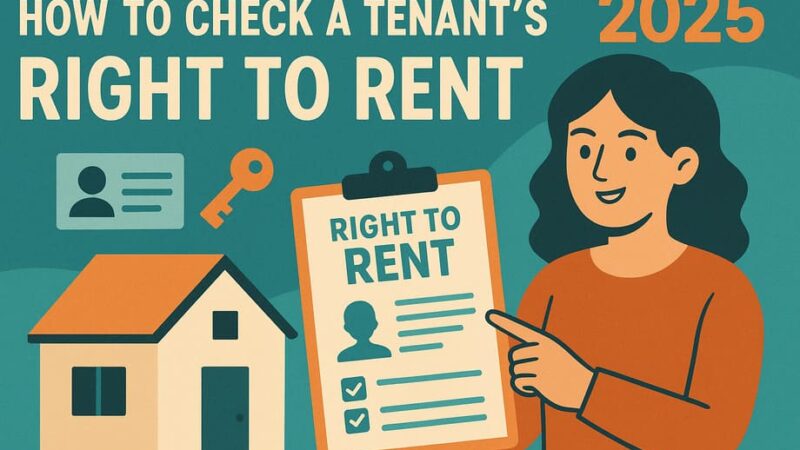Furnished vs Unfurnished: Which Is Better For Landlords And Tenants?

When it comes to rental properties, one of the biggest decisions for both landlords and tenants is whether to go furnished or unfurnished. Both options have their advantages and disadvantages, and the right choice depends on your specific circumstances and needs.
Let’s explore the differences and help you decide which option works best for you.
What’s the difference?
Before diving into the pros and cons, it’s important to understand what each option actually means.
Furnished properties include:
- All white goods (cooker, fridge, freezer, washing machine)
- Essential furniture (beds, wardrobes, sofa, dining table and chairs)
- Curtains or blinds
- Light fittings
- Sometimes smaller items like kettles, toasters, and crockery
Unfurnished properties include:
- Basic kitchen appliances (cooker, sometimes fridge)
- Bathroom fittings
- Curtains or blinds
- Light fittings
- Carpets or flooring
Important: Unfurnished doesn’t mean completely empty! Most tenants expect basic appliances and fixtures.
Part-furnished (the middle ground):
- White goods and some furniture
- Often includes beds and wardrobes
- Tenant provides smaller items and personal touches
For landlords: Which is better?
Benefits of letting furnished
Higher rental income Furnished properties typically command 10-20% higher rent than unfurnished ones. You’re essentially renting both the space and the contents.
Attracts specific tenants
- Young professionals without furniture
- Students
- Corporate tenants on temporary assignments
- International workers
Faster letting Properties are move-in ready, which appeals to tenants who need to relocate quickly.
Tax advantages Furniture costs and replacements can often be claimed as tax-deductible expenses.
Drawbacks of letting furnished
Higher upfront costs You’ll need to invest significantly in good quality furniture and appliances.
Ongoing maintenance You’re responsible for repairing and replacing items when they break or wear out.
Insurance costs Higher premiums to cover the contents you’re providing.
Shorter tenancies Furnished properties often attract tenants who move more frequently.
Benefits of letting unfurnished
Lower initial investment No need to buy furniture – just provide the basics.
Longer-term tenants People with their own furniture tend to stay longer, providing more stable income.
Less maintenance Tenants are responsible for their own belongings.
Simpler management Fewer items to worry about, shorter inventories, less potential for disputes.
Drawbacks of letting unfurnished
Lower rental income Typically 10-20% less rent than furnished properties.
Smaller tenant pool Won’t appeal to students, young professionals, or corporate tenants.
May take longer to let Especially in areas where furnished properties are in high demand.
For tenants: Which is better?
Benefits of renting furnished
Lower upfront costs No need to buy expensive furniture when you move in.
Convenience Everything you need is already there – just bring your personal belongings.
Flexibility Perfect if you’re not sure how long you’ll stay or might need to move for work.
Great for specific situations
- First-time renters
- Temporary work assignments
- International moves
Drawbacks of renting furnished
Higher monthly rent You’ll pay a premium for the convenience.
Less personalisation Limited ability to make the space feel like your own home.
Potential deposit issues You’re responsible for any damage to the landlord’s furniture.
Quality concerns You might not like the style or condition of the provided furniture.
Benefits of renting unfurnished
Lower monthly costs Cheaper rent means more money for other things.
Complete control Choose furniture that matches your style and needs.
Long-term value Build up your own furniture collection over time.
Feels like home Easier to create a space that truly reflects your personality.
Drawbacks of renting unfurnished
High initial costs Expensive to furnish an entire property from scratch.
Moving challenges More costly and time-consuming to move your belongings.
Time investment Takes time to shop for and arrange furniture delivery.
Who typically chooses what?
Understanding typical preferences can help landlords target the right market:
Tenants who usually prefer furnished:
- Students
- Young professionals (20s-early 30s)
- Corporate tenants
- International workers
- People between permanent homes
Tenants who usually prefer unfurnished:
- Families with children
- Established professionals
- Long-term renters
- People who already own furniture
- Those wanting to personalise their space
Location makes a difference
Your property’s location significantly affects which option works best:
City centres and university areas
- High demand for furnished properties
- Students and young professionals are common
- Higher rents achievable for furnished
Suburban and family areas
- Unfurnished often preferred
- Families typically have their own furniture
- Longer-term tenancies more common
Business districts
- Furnished properties popular for corporate lets
- Short-term assignments common
- Premium rates possible
Part-furnished: The best of both worlds?
Part-furnished can be an excellent compromise:
For landlords:
- Lower investment than fully furnished
- Higher rent than unfurnished
- Appeals to broader tenant base
- Less maintenance than fully furnished
For tenants:
- Some convenience without full cost
- Ability to add personal touches
- Don’t need to buy major appliances
- Often better value than fully furnished
What to include in part-furnished:
- Essential white goods
- Major furniture like beds
- Leave out personal items and decorative pieces
Making the right decision
Consider these factors when choosing:
Your target market Research what tenants in your area typically want and can afford.
Property type
- Flats often work well furnished
- Family houses may suit unfurnished better
- Studio apartments almost always furnished
Your budget Can you afford the initial investment in good quality furniture?
Management time Furnished properties typically require more hands-on management.
Local competition What are similar properties in your area offering?
Legal considerations
Safety requirements
- All furniture must meet fire safety standards
- Electrical items need regular testing
- Gas appliances require annual safety checks
Insurance
- Furnished properties need contents insurance
- Higher premiums for more contents
- Make sure your policy covers rental use
Inventories
- Detailed inventories essential for furnished properties
- Regular condition reports recommended
- Clear documentation prevents disputes
The bottom line
There’s no universal “right” answer to furnished vs unfurnished. The best choice depends on:
- Your target tenant market
- Property location and type
- Your budget and management capacity
- Local market conditions
For landlords: Research your local market thoroughly. What works in one area may not work in another. Consider starting with part-furnished as a flexible option.
For tenants: Think about your circumstances – how long you plan to stay, whether you own furniture, and your budget for both rent and furnishing costs.
The most successful approach is understanding what your local market wants and delivering it well, whether that’s furnished, unfurnished, or something in between.
Remember: the goal is to create a win-win situation where tenants are happy with their home and landlords achieve good, sustainable returns.
Last Updated on July 31, 2025 by James Cartwright







